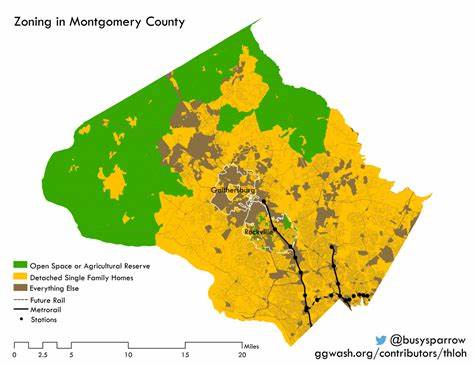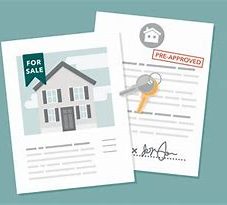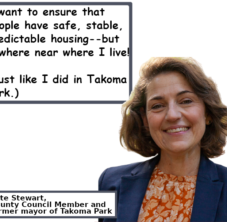This post, part 3 in a series on our county’s distorted housing market, is mostly descriptive of the county’s land use policy and how it contributes to high housing costs. In addition, it also gives a chance for readers to reflect on how zoning affects them individually.is You can read Part 1 here and Part 2 here.
In two previous posts (January 5 and January 29) we made substantive, data-backed arguments that Montgomery County’s housing inventory is already moderately priced and there is no need for additional measures such as rent control. Our county manages to keep its housing inexpensive compared to other DC-area counties by fostering an environment hostile to businesses, employers, and residents, so people prefer to live in the other DC counties. That’s the demand side of the equation.
On the supply side, Montgomery County implements policies similar to those in many local jurisdictions that keep housing prices artificially high. The policy that contributes the most to high housing prices is zoning.
Zoning is the practice of deciding the purpose for a plot of land, and zoning decisions are typically entrusted with a public authority. The rationale for publicly regulated zoning is reasonable. You don’t want a school to be located next to a vaping store, something that actually was the case a few years ago.
Unfortunately, and as so often happens, a government regulation to justifiably protect a few is used to oppress the many, and zoning is no exception. In fact, a position paper straight out of the Biden White House confirms what many housing activists and free-market proponents have been saying for quite some time: “Another key factor driving limited housing supply is local zoning restrictions.” Montgomery County has implemented several large-scale zoning decisions that constrict the availability of land, making housing more expensive than it would otherwise be. Here are a few of them.
Agricultural Reserve
Most of northern Montgomery County is zoned for agriculture and is protected by the Agricultural Reserve. The Ag Reserve spans 93,000 acres with no more than one home allowed for every 25 acres. Residents who want to build a house on the Ag Reserve face very high impact fees, making modest low-density housing, not to mention high-density housing, impossible in all that area.
Parks
Our county has 420 parks across 37,220 acres. Some of them are enormous (South Germantown Recreational Park—695 acres), and some of them are pint-size (Acorn Urban Park—0.4 acres). Not all of these parks could be re-zoned for residential use, but assuming that 37,000 acres were made available, four units on each acre, that increases the housing stock by 148,000 units.
Public golf courses
There are nine public golf courses in Montgomery County.
| Course | Size (approx) |
| Falls Road | 150 acres |
| Hampshire Greens | 250 acres |
| Laytonsville | 157 acres |
| Little Bennett | 257 acres |
| Needwood | 194 acres |
| Northwest | 300 acres |
| Poolesville | 269 acres |
| Rattlewood | 213 acres |
| Sligo Creek | 62 acres |
Here are some thought experiments:
- The Hampshire Greens and Northwest golf courses are 3.3 miles from each other. Suppose they were owned privately: would both survive, would one of them close, or would they lower green fees to complete?
- The Sligo Creek Golf Course is within the Beltway, between Sligo Creek Parkway and Dallas Ave. The land in that area is zoned R-60, which means 45 homes can be built. If you owned the golf course, you could easily sell it to a developer for several million dollars, compared to a $25/player green fee. Which would you choose?
Low-density residential housing
Much of Montgomery County is zoned for single-family detached housing. Look at the zoning map. All the plots zoned with RE-2, RE-2C, RE-1, R-200, R-90, R-60, and R-40 are single-family. (R-200 means a single house is allowed on a generous 200,000 sq. ft. lot, and R-40 means a single house is allowed on a modest 40,000 sq.ft. lot.) That is quite a bit of land that could be re-zoned for multi-family. The County Council has indeed recognized that the low-density zones already have infrastructure that makes them viable for redevelopment as multi-family. In fact, Thrive 2050 was an acknowledgment that the County Council has responsibility for zoning decisions that can increase the stock of moderately priced housing.
Filling housing gaps
In a 2019 report Meeting the Washington Region’s Future Housing Needs, the Urban Institute noted that Montgomery County has a housing gap of 50,500 units. At four units per acre:
- Rezoning 1,571 acres (1.2%) of the Ag Reserve provides enough land for 6,281, housing units.
- Rezoning all 1,852 acres of golf courses increases the housing stock by 7,408 units.
- Rezoning 9,202 acres (25%) of county parks increases the housing stock by 36,811 units.
- Total of all units due to rezoning green space: 50,500.
If you care what the Urban Institute says, MoCo can resolve its housing gap by rezoning land that is protected against development for one reason or another. If you believe in free markets, a) you don’t care what the Urban Institute says, and b) you believe that developers should be free to take on the significant risk of identifying and filling any housing gap.
Conclusion
This post doesn’t purport to support or oppose the Ag Reserve, parks, golf courses, and low-density housing. We of a free-market mindset let people freely decide the best use of a plot of land. The point here is that if the county government and housing activists think there is enough land to exclude housing in favor of golf courses and agriculture, then they cannot complain about the cost of housing.
Homework
You purchased a home 15 years ago near the Glenmont Metro station in an area zoned R-60. You are guaranteed that your neighbor cannot build a high-density condo tower next door. Should the zoning change on the neighboring plot, a) the tower goes up, b) your life turns into a nightmare, and c) your own house becomes worthless. Is that fair to you? Is that fair to the young adults who want to live in your area?
Suppose you are a twenty-something looking for your first condo. You’d like to buy in Glenmont close to the Metro station. All the land in that area is zoned R-60, so there are no modestly priced condos available. You are locked out of the market because of zoning. Is that fair to you? You demand a change in zoning so that you can get your condo, but that zoning change causes a neighboring retiree to lose half of his net worth; is that fair?
Supporters of free markets dislike zoning because it always introduces a protected class of residents, and any MoCo homeowner with 10 years ownership is in that protected class. Once zoning is in place, it’s extremely difficult to undo because it represents a violation of contract between the county government and the residents. The intense opposition to Thrive 2050 and ZTA 19-01 demonstrated this sense of betrayal.





